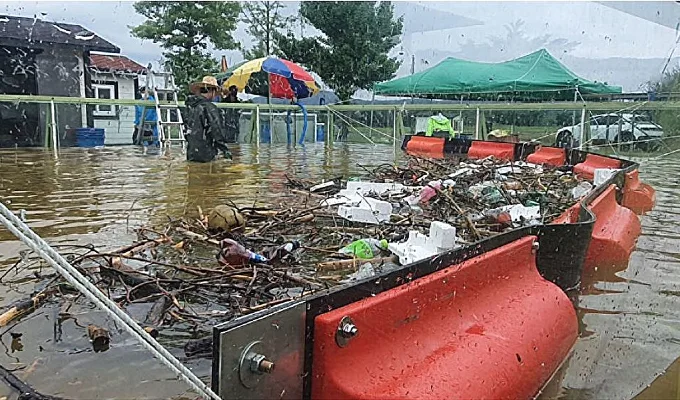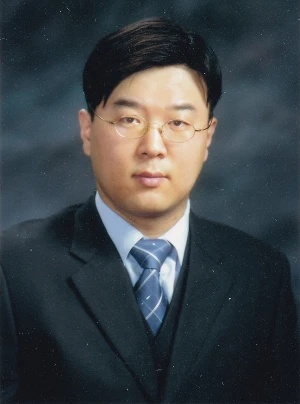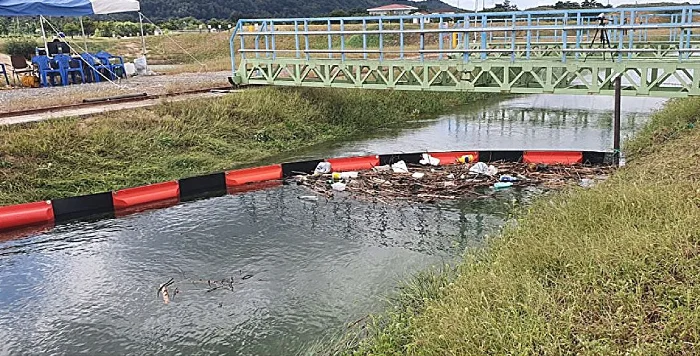In the ongoing battle against marine debris, which poses a grave threat to our oceans’ health, a groundbreaking solution has emerged from the labs of the Korea Institute of Civil Engineering and Building Technology (KICT). This innovative technology aims to tackle the issue of floating trash in rivers, a significant contributor to marine pollution.
The initiative was spearheaded by Dr. Sang Hwa Jung and his dedicated research team, who recognized that rivers serve as crucial conduits for land-based marine debris. To address this pressing concern, they embarked on a unique “living lab” project, fostering collaboration among local governments, citizens, and experts.
Chungcheongnam-do, also known as Chungcheongnam Province or simply Chungnam, boasts South Korea‘s third-longest coastline, riddled with a network of 500 rivers and streams. Unfortunately, the region has witnessed a relentless surge in marine debris, with riverborne trash accounting for a staggering 61.2% of the total pollution.
In 2019, Chungnam took the proactive step of installing an interceptor facility, but it faced structural challenges during periods of heavy rainfall and flooding. The root cause of these issues was a lack of consideration for the river’s unique geometry and characteristics, including water levels, width, flow rate, and fluctuations.

To rectify these shortcomings and achieve multifaceted objectives, Dr. Jung’s team embarked on a meticulously planned journey. Their research journey encompassed characterizing the target river, pinpointing optimal locations for the interceptor, designing the barrier and support structures, and executing on-site construction. Collaborating with Foresys Co., Ltd., they ensured the structural integrity of the interceptor and conducted exhaustive numerical model experiments and full-scale empirical tests at the River Experiment Center in Andong, Gyeongsangbuk-do.
Spanning a vast area of 192,051 square meters, the River Experiment Center boasts South Korea’s most extensive testing infrastructure, capable of delivering a flow supply of up to 10 cubic meters per second. This facility provided an ideal platform for rigorous empirical testing.
The fruits of this labor materialized in May 2023 when an interceptor facility was commissioned on the Yugu-cheon, also known as Yugu Stream, in Gongju, Chungnam. Notably, the project incorporated a robust monitoring system that relied on input from local governments to determine optimal collection times and real-time operational status updates.
In the above drone footage provided by Foresys, is a view of the floating trash interceptor installed on a branch of the Yugu-cheon in Gongju, Chungcheongnam-do. The barrier is designed to withstand a load of 100 tons and features connected support piles that can be moved up and down in response to the water levels.
Building upon the acquired image data, a support system driven by artificial intelligence (AI) emerged. This cutting-edge AI technology analyzes the volume and composition of floating debris within the river, allowing for precise scheduling of collection cycles.

Dr. Jung describes the urgency of the situation, stating, “Garbage that reaches the sea becomes a daunting challenge due to its vast distribution and the presence of contaminants like salts and mud, which escalate cleanup costs. Intercepting and collecting this debris in rivers before it reaches the ocean is imperative.” He emphasizes that by merging traditional river engineering with state-of-the-art technologies like information technology and AI, we can address both local and global environmental concerns more effectively.
More To Discover
This project has ignited excitement within the local community, offering a beacon of hope in the realm of technology-driven sustainability. The interceptor facility and monitoring system on Yugu-cheon will remain operational and subject to continuous refinement until 2026.
Discussions are already underway with relevant local governments to expand the initiative to other rivers in the future. As we look ahead, it’s clear that this innovative solution may hold the key to cleaner, healthier rivers and oceans for generations to come.



















